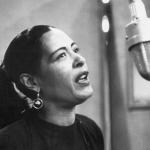There Were Lynchings in the North, Too

One night in 1939, in a Greenwich Village cafe that billed itself as “the wrong place for the Right people,” Billie Holiday sang a disturbing ballad called “Strange Fruit” for the first time. “There wasn’t even a patter of applause when I finished,” she said later. “Then a lone person began to clap nervously. Then suddenly everyone was clapping.”
The song referred to lynchings in the South. But after the Civil War, there were also lynchings in the North, including one in New York State.
A new website and research project, “Lynchings in the North,” is examining the lives of victims of racial violence as part of the “Hidden Legacies” initiative led by Rachel Swarns, a former New York Times reporter who is a journalism professor at N.Y.U. Swarns is collaborating with the National Memorial for Peace and Justice to identify lynching victims, and her students are writing obituaries based on archival records and interviews.
“The fact is that we often think about lynchings in the South, and thousands took place in the South,” Swarns said. “But it’s striking that Billie Holiday performed that song in New York, because racial violence happened in the North, too, and in New York. It’s important for Americans to know and understand that and reckon with that. I was born and raised in New York, and I had no idea.”
She said she had come across — “completely by accident” — a mention of a Black man who was lynched in Port Jervis, N.Y., in 1892. “I thought, how did I not ever hear about this,” she said.
A map on the “Lynchings in the North” website identified him as Robert Lewis, who was hanged as a crowd watched. Swarns said he had worked in a hotel. He was accused of assaulting a white woman but said he had been put up to it by her white boyfriend, who had been blackmailing her.
One article from a few days after the lynching said that public opinion had swung from “unqualified approval” to “bringing the leaders of the deed to justice.” Several suspects were identified, but there were no convictions.
Nationally, Swarns said, more than 4,000 African Americans were lynched between 1877 and 1950. There was an anti-lynching protest in Times Square in 1937, the year the poem that became “Strange Fruit” was first published.
The words — and, later, the music — were the work of a Jewish high school teacher from the Bronx, Abel Meeropol. The author David Margolick wrote that Meeropol and his wife were “closet Communists” who gave a percentage of their earnings to the party. Meeropol, using the pseudonym Lewis Allan, was also a prolific poet and songwriter.
“Strange Fruit” became closely identified with Holiday, but she was not the first to sing it. According to Margolick, the song had been “regularly performed in left-wing circles” and, at Madison Square Garden, by a Black singer, Laura Duncan.
But that was before “Strange Fruit” became Holiday’s closing number at Café Society, the Sheridan Square establishment that, Margolick said, deliberately “mocked the empty celebrity worship, right-wing politics and racial exclusion of places like the Stork Club,” the swanky uptown nightclub. The Café Society’s owner, Barney Josephson, once said that he had “wanted a club where blacks and whites worked together behind the footlights and sat together out front.”
Josephson said that when he looked at the sheet music for “Strange Fruit,” Meeropol’s lyrics brought tears to his eyes.
“Strange Fruit” was not Meeropol’s only footnote in history. He raised the two sons of Julius and Ethel Rosenberg, who were executed in 1953 after they were convicted of conspiring to pass atomic secrets to the Soviet Union. The boys were raised as Michael Meeropol and Robert Meeropol; they wrote in 2015 that they had concluded that their father was guilty of conspiracy but not of “atomic spying.” They also wrote that neither of their parents deserved to be executed.
[James Barron writes the New York Today newsletter, a morning roundup of what’s happening in the city, for The New York Times. Email: barron@nytimes.com]
